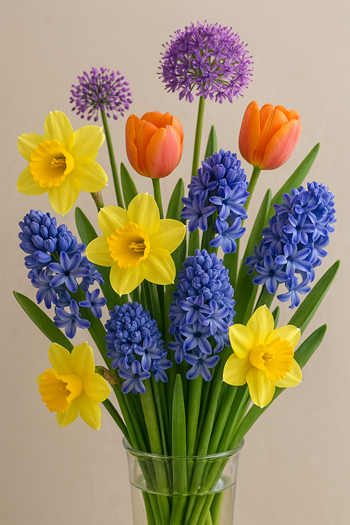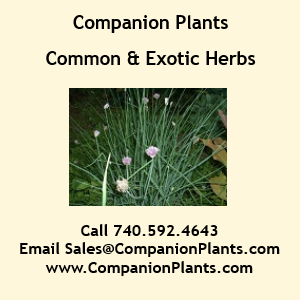
This fall plant an array of spring flowering bulbs to brighten your garden and bouquets. There are plenty of daffodils, tulips, hyacinths and alliums that will delight with an assortment of flower colors and sizes that will bloom throughout the spring.
Include animal resistant double, bicolor, and split cup daffodils that provide unique beauty and impact in floral arrangements. Create a simple bouquet with just a few stems of daffodils or an elegant arrangement of single and double flowered varieties.
Harvest daffodils when the buds show color and are perpendicular to the stem like a goose’s neck. Don’t worry about the sap daffodils exude, shortening the life of the other cut flowers in the arrangement. Properly conditioning the daffodils will eliminate the risk to your other spring favorites
Consider wearing gloves as some people report itching or rashes when handling these plants. Use your hands to harvest daffodils for the longest stems possible and to reduce sap released from the stem. Reach into the base of the flower stem, thumb pointed down and pull up. Cut the stems of freshly picked daffodils to the desired length for conditioning. Place them in a clean container of cool water and floral preservative. Leave them in the water for three to six hours when the sap stops flowing. Do not recut the stems before adding them to mixed flower arrangements.
Gardeners growing tulips strictly for cutting will plant the bulbs in trenches and treat them as annuals. The first-year bloom is always the biggest, but you can enjoy them cut and try for a second and third year of flowers. Just cut the stems short and leave at least two to three leaves on the plant to create and store energy for next year’s bloom.
Harvest tulips when the buds are just starting to show color for the longest vase life. Wait for double and parrot type tulip buds to be fully colored but not yet open. Remove the whole plant, bulb and all, if you do not plan on saving the plants for the following year. Store the tulips upright with the bulbs attached. Cut and rehydrate the stems in water just before arranging.
Wrap the stems in brown paper if they are cut in the garden or when you rehydrate the stems and set them in several inches of cool water for 12 to 18 hours. Keep in mind tulips continue to grow after cut so plan for this when creating your arrangements.
Harvest hyacinths for cutting as you did tulips. Pull the whole plant, bulb and all, out of the ground if you are growing them as annuals for cutting. Otherwise, cut only the stem and leave all the leaves behind if you want the bulbs to bloom again next year.
Include a variety of alliums in your planting plans this fall. Alliums’ long and sturdy stems make them easy to harvest and arrange. Purple Sensation, Mount Everest, drumstick allium and Allium atropurpureum make excellent additions for floral bouquets.
Cutting and arranging flowers is a wonderful way to bring the beauty of your garden indoors. The more you do it, the easier it gets, and you’ll soon be sharing your flowers with friends, neighbors, family, coworkers, and everyone who stops by to admire your gardens.
Melinda Myers has written more than 20 gardening books, including Small Space Gardening. She hosts the “How to Grow Anything” DVD series and the Melinda’s Garden Moment TV & radio segments. Her website is MelindaMyers.com.




Comment here